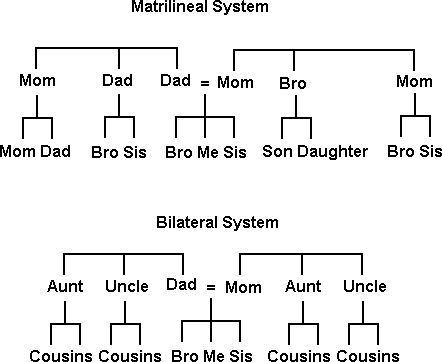- LBHC Library
- Catalog
- Interlibrary Loan
- Purchase Request
- Policies
- Archives
- About
- Image Archive
- Summary of Policies and Procedures
- Policy and Procedure Manual
- Collections
- Ann Big Man
- Barney Old Coyote
- BIA Aerial Maps
- Charles J. Kappler
- Crow Indian Historical Collection
- Crow Indian Photo Collection
- Crow Indian Veterans Project
- Crow Tribe Water Rights
- Crow Veterans Project
- Dennis Harcey
- Don G. Rickey, Jr.
- Donald Parman
- Ellis Prentice Cole
- Eloise Whitebear Pease
- Eloise Whitebear Pease II
- Frederick E. Hoxie
- Frederick William Voget
- Friends of Chief Plenty Coups
- John Pretty on Top
- Joseph Medicine Crow
- Karen Watembach
- Mark Clatterbuck, Crow Christianity
- Microfilm Holdings
- Peggy Albright
- Plenty Coups House & Sacred Spring
- Robert Summers Yellowtail
- Sabrina Peck
- Unprocessed Collections
- Staff
- eBooks
- Cataloging Manual
- Databases
- Access Science
- American Indian Experience
- America’s News/Newsbank
- Ancestry.com (library edition)
- Anthrosource
- Credo Reference
- EBSCO Databases
- ERIC
- Ethnic NewsWatch
- Films Media Group Archival Films & Newsreels Collection
- Films On Demand Master Academic Package
- Gale Databases (multiple topics)
- GreenFILE
- Heritage Quest Online
- Medline Plus
- Nature.com
- Overdrive E Books (individual account needed)
- ProQuest Academic & College E-Book Collections
- ProQuest Databases
- Safari Tech E-Books - On Campus
- Science Direct
- Crow Resources
- About the Crow
- History and Culture
- Chiefs and Leaders
- Crow Bibliography
- Crow Fair
- Genealogy and Kinship
- Government and Law
- New Tribal Constitution (2002)
- Old Tribal Constitution (1948)
- Chairmen of the Crow Tribe
- Treaty of 1825
- Treaty of 1851
- Treaty of 1868
- 1868 Fort Hawley Treaty (unratified)
- Treaty of 1880 (unratified)
- Act of April 11, 1882
- Dawes Act of 1887 (Allotment Act)
- Act of March 3, 1891
- Agreement of 1891
- Agreement of 1904
- Crow Act of 1920
- Crow Act of 1920 (Amended 1926)
- Indian Reorganization Act of 1934 (IRA)
- Agreement of 1937 (Hardin Cession)
- Crow Boundary Settlement Act of 1994
- Reservation Districts, 2000
- Reservation Land Cessions
- Tribal Histories Project
- Apsáalooke Language Guide
- Chapter 1: Introduction
- Chapter 2: Beginning of the Apsáalooke
- Chapter 3: Historic Apsáalooke Culture
- Chapter 4: Early Reservation
- Chapter 5: Present-day Life
- Chapter 6: Appendix
- Lesson Plans
- Audiovisual Bibliography
- Bibliography for Curriculum
- Apsáalooke Speakers
- Bird Cards
- Birds and People
- Card Game
- Conservation
- Crow Fair Webquest
- Elders
- Family Chart
- Far Out
- Flag
- Foods
- Government
- Grandma Parade
- Kinship Card Game
- Language Tree
- Manners
- Math
- Migration
- Place Name Cards
- Place Names
- Plant Cards
- Plants
- Poetry
- Rock Art
- Sign Language
- Smallpox
- Speeches
- Stars
- Stars Puzzle
- Stick Land Management
- Teepee Sun Time
- Timeline Hunt
- Warrior Jump Rope
- The Crow People in the 1990s
- Crow Oral Literature
- Selected Websites
- Beyond our Library
Chapter 3.5: Kinship

The kinship system of the Apsáalooke might seem slightly confusing at first, but to people who live it, it is very simple. When you think about the traditional lifestyle of the Apsáalooke and other nomadic tribes, life was not always easy and survival was not always guaranteed. Traveling with other tribal members in small groups would have allowed people to get to know each other very well, and families literally would have been constant neighbors.
Historically, the Apsáalooke only related to other familial members as a mother, father, grandmother, grandfather, brother and sister. In this way, people only had immediate family and they were surrounded by them. The Apsáalooke people identify clans and family through a matrilineal system, meaning that relationships are traced through the mother’s side of the family.
A child born into a family would call all of his mother’s sister’s mother. His mother’s brothers would be his brothers. His father’s sisters would be his mothers as well, but the father’s brothers would be considered fathers rather than brothers. In doing this, a child was born into a large family, with many parents, all to care for and raise the child. If anything were to happen to the child, there were plenty of mothers and fathers to take care of him, and to turn to for guidance and support. Sometimes, parents who had many children might give a child of theirs to a brother or sister who didn’t have children of their own.
This way of relating to each other not only ensured that families had strong relationships, but that people respected each other regardless of age. If a woman had a child and she had younger sisters who were not much older than her own child, the girls would still be considered this child’s mothers. Her child would still grow up treating them as his mothers, with the same respect that he treated his birth mother. Another situation might go something like this: A couple had a little boy they named him Sam. Sam’s mother has a sister who had a little boy a few years later. Since both women are Sam’s mothers, the little boy is his brother. Can you think of a way that someone could have a grandparent that was younger than them?
Below is a chart comparing a matrilineal kinship system as practiced by Apsáalooke people with a bilateral kinship system as commonly practiced by Anglo people in the United States.

| « Back | Contents | Next » |